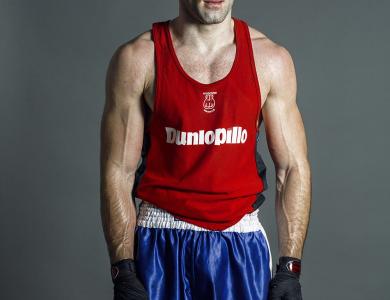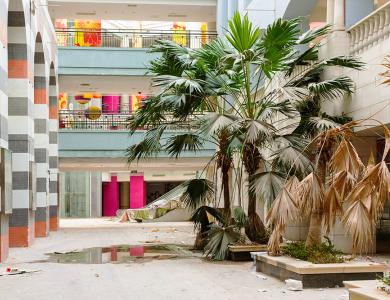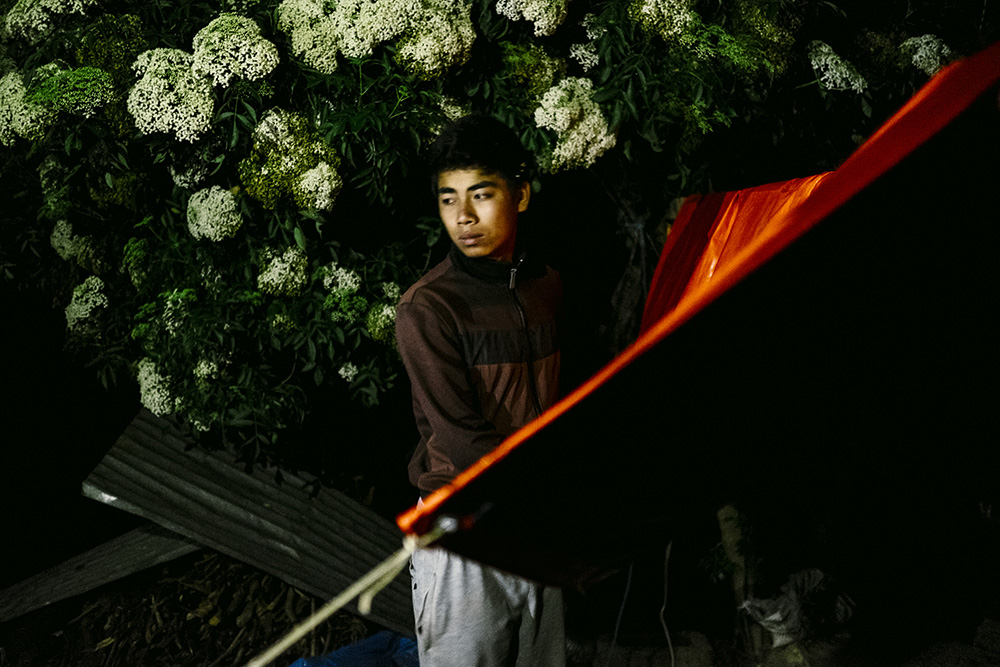
Blink is a platform connecting thousands of media freelancers with publishers, brands and agencies who need high quality content produced on location anywhere in the world.
---
Based in Quebec, Hans Lucas photographer Renaud Philippe has worked independently in countries such as India, Haiti, Kenya and Tunisia with the aim of unveiling the hidden world of those affected by precarious circumstances.
Blink’s Kyla Woods caught up with Philippe to speak about covering the earthquake in Nepal, limitations of working in the country, how to create an in-depth photo essay in a disaster stricken area and what it was like as a freelancer covering the aftermath of a natural disaster.
KW: Were you near Nepal when you heard about the earthquake?
RP: At the time, I was in a remote place in Quebec and on May 2, I was initially meant to leave for Japan to do a personal project. I had no reception, and on April 25, I received an SMS from my brother asking if I had seen what had happened in Nepal. After two days I decided to change my original plans.
KW: What supplies did you take with you?
RP: Mainly batteries, as well as two camera bodies and two lenses; a 35mm and a 50mm. But the real problem was that there was hardly any Internet reception. When the second earthquake hit, I was only able to send two photographs that took about six hours to send. The only way to send multiple, high-res files, was to walk back to Gorkha, and that was a two-day trip.
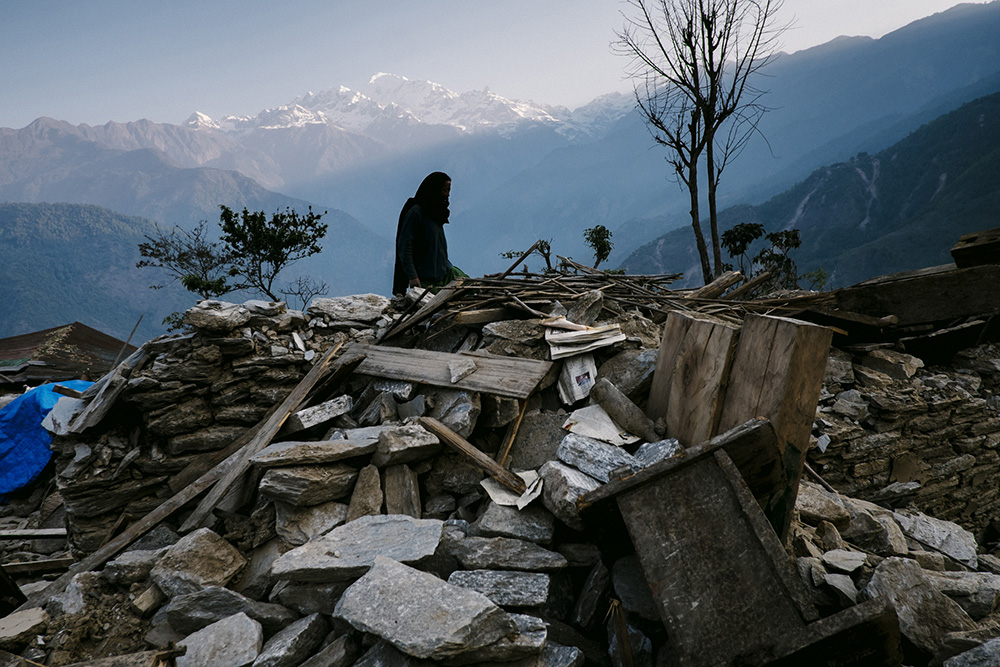
KW: Did you have contacts in Nepal before you got there?
RP: Not really. I do have contacts that work in NGO’s based in Nepal, but they were all busy. The only person who I worked closely with when I arrived, was a journalist Sarah R. Campagne who also works for Le Devoir, which is the same newspaper that had agreed to publish “Barpak”. She happened to be there by accident, as she wasn’t supposed to work on the earthquake, but instead on an archive subject.
I met her at her guesthouse in Kathmandu. To get to the area affected by the earthquake, we either used local transportation, such as buses, motorbikes or trucks; though at one point we did hire a jeep.
KW: Was it difficult to get to Barpak?
RP: Yes. Barpak is about a six-hour drive from Patan, which is the closest city to the airport. On the way, we stopped in Gorkha. We talked to numerous people; journalists, NGO employees, volunteers and they all told us that we could only get to Barpak by helicopter. The only problem was that no one could point us in the direction of a pilot - even NGO’s weren’t able to access Barpak!
We thought there must be a way, despite what NGO representatives were saying. And, after four days of searching, we finally found a route. We arrived in Barpak by night, but there is a five-hour walk to the entrance of the city. What greeted us, shocked us!
Behind the “Welcome to Barpak” sign was just a pile of rocks. There was nothing left.
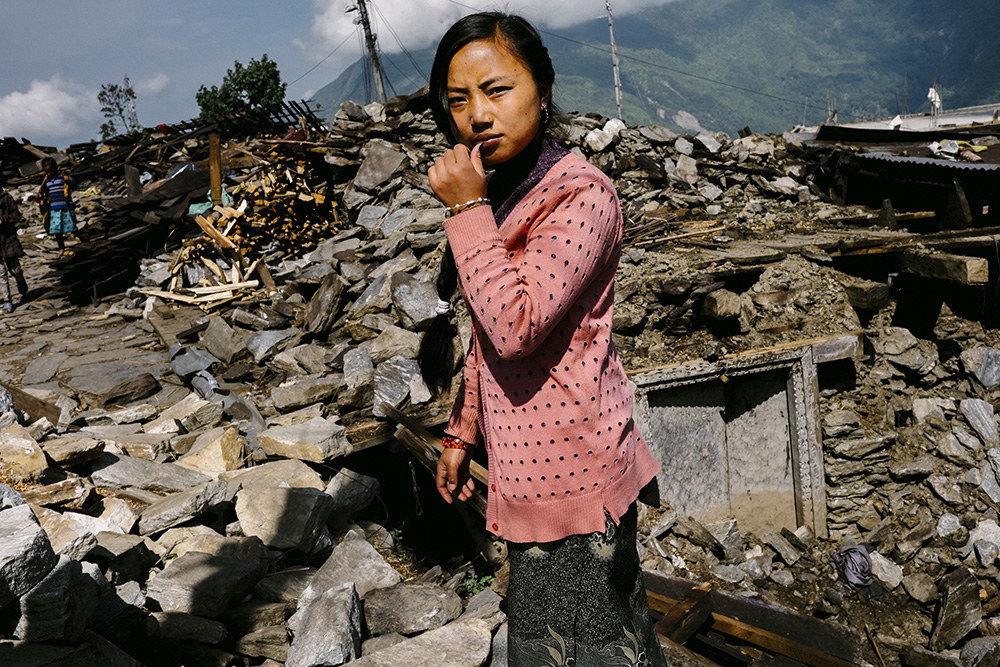
KW: Did you and journalist Sarah R. Champagne work together throughout your stay?
RP: Yes. It was refreshing because I could focus on the photographs. She was very methodical; she took notes, names, and wrote detailed accounts of the events following the earthquake. Actually, Sarah and I didn’t know each other before this. She is a freelance journalist who works for the same newspaper as me, Le Devoir. Le Devoir is the reason we connected.
KW: How long did you stay in Barpak?
RP: A total of two weeks. During that time, we did go back to Gorkha and ventured to Laprak. This village is about a four-five hour walk, and most of it was destroyed by a landslide.
In most parts of the village, there was nothing left. The people who lived there felt that it was too unstable, too unsafe to reside there anymore. As a result, most of the residents camped at a higher altitude, on the mountain. Last week, we received news that the living situation had not changed; many people are still living in tents.
KW: Before arriving in Nepal, did you have any concerns?
RP: There’s always a lot of pressure, especially when you go to a place on a whim. You need to do a great job, get close to people and try to connect with people on an intimate level. As far as navigating my way through Nepal, I wasn’t too worried because I was familiar with the country - previously, I worked around Damak and the Bhutanese refugee camp. This was, however, my first time working in the Gorkha district.
The only aspect of life that surprised me in comparison, let’s say to the 2010 earthquake in Haiti, is that there was no violence that followed the earthquake.
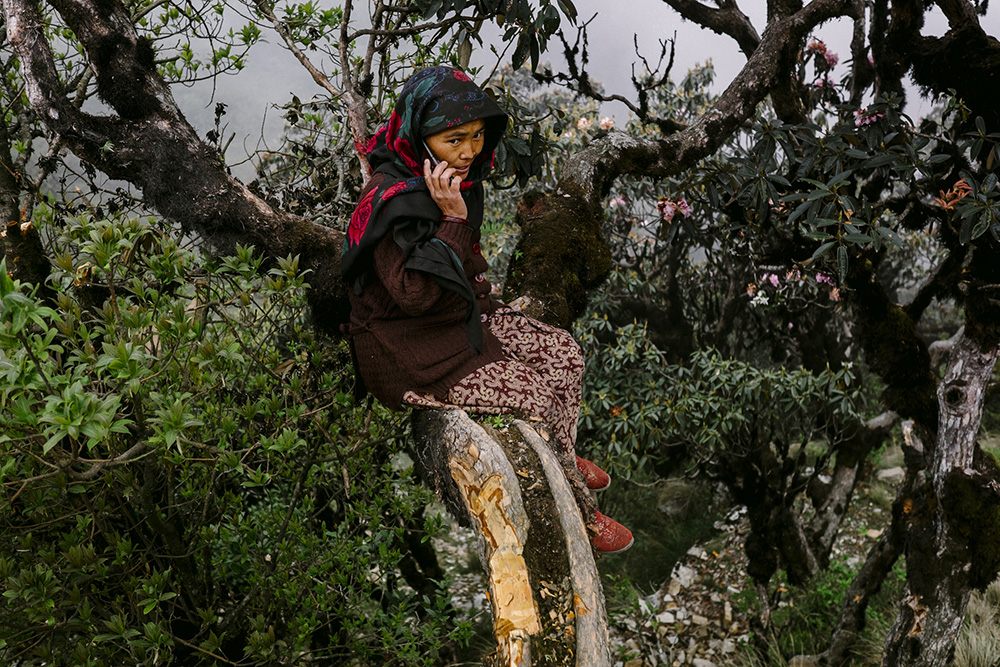
KW: Do you use Blink?
RP: I’m a relatively new user, but I did use it while I was in Nepal. I made sure that I tagged my position regularly. I was also included in the weekly Blink newsletter in which they list vetted photographers to cover breaking news stories.
KW: You went there as a freelancer - were you concerned about having these photographs published?
RP: Yes. The main concern is that as a photographer, you want to know that your work is useful, that it’s relevant.
When you notice that well-known publications, like The New York Times and Le Monde, send photographers to ground zero, you, as a freelancer, have to be aware that you need to tell a different story, one that is timeless, and that surpasses surface of the natural disaster and unearths how people cope with the aftermath.
Questions you need to ask yourself as a photographer, or as a storyteller, are “what is the life after like what is the trauma?” Or “how is life a year later?” and “what is the long term effect of the earthquake?”
KW: What are some of the limitations of working as a freelancer in a place like this?
RP: Perseverance. As a freelancer, access is incredibly crucial to the development of your story. When you need a helicopter to get you from one place to another, you really need to know the right people.
The first thing we did when we arrived in Nepal is talk to people and figure out where you can go, where you can’t, etc. to understand the situation and take decisions.
KW: Are you returning next year?
RP: Both Sarah and I are planning on going back in April.
KW: What will you focus on during your next trip?
RP: As of now we are trying to find a way to make sure that we can finance and publish the story. We will be following up with the families we connected with whilst we were there.
KW: And you’ve kept in contact with the people you’ve met there?
RP: Yes, Sarah and I kept in touch with most of the people from that area. I’m in touch with the helicopter pilot as well. I strongly felt that travel by road initiates in-depth storytelling as you can talk to people, live with them, understand their story and build long-lasting connections. Something that often gets disregarded, especially when you are working a fast pace are the connections you can make - there are good people you can learn from, as long as you take the time to get to know them.
In hindsight, I am glad that we stayed in Barpak, rather than travel throughout the country. We were able to pursue documentary storytelling at its best. When you jump from one place to another, you only shoot what you see first. But, for example in Barpak or Laprak, you walk on a destroyed house and you as a photographer capture that - evidence of the event - and then after a few days, it becomes “normal”. On the other hand, what doesn’t change is how the people cope with that event. You focus on the lives of the people living there.
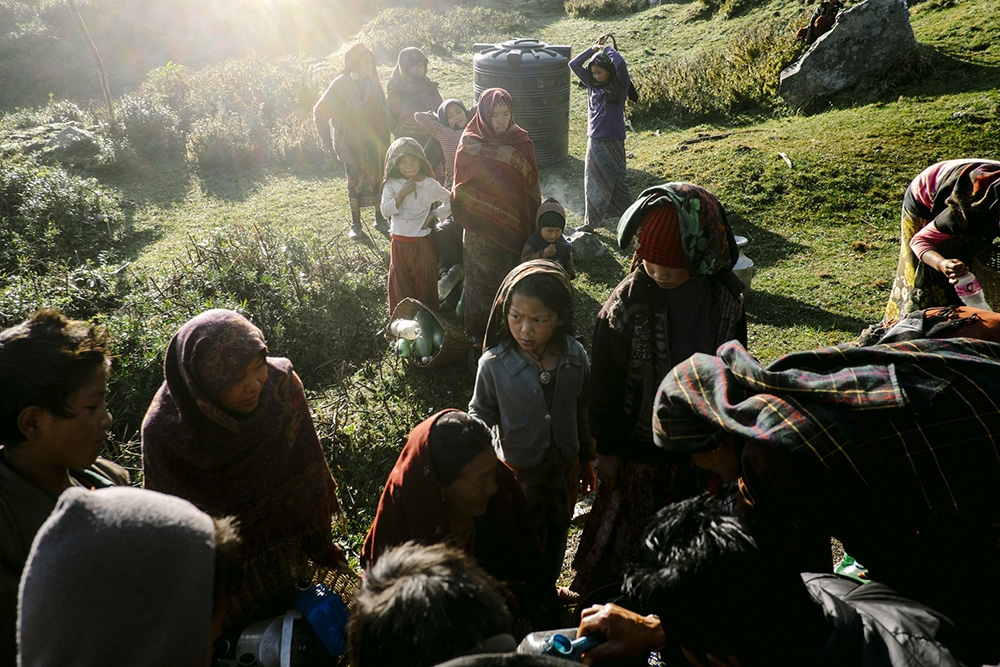
KW: Were there any cultural traditions that surprised you, or influenced how you worked?
RP: The Nepalese are very superstitious, and after the earthquake people were scared to walk at nighttime because they believed that the ghosts of those who died during the quake would be wandering the streets. This was something very important to know as a journalist. We want to respect their customs because it is an important part of the overall story.
Another thing to be aware of is that the Nepalese don’t express their personal feelings the same as, let’s say, a westerner might. You can’t ask, “How do you feel?” and expect a deep response. This is where imagery comes into play. Particularly after the second earthquake, you could see the lines of worry and trauma etched into the faces of the villages.
Since I have been to the country I felt confident as I began to understand the culture, love the country and its people. I worked with my heart. The only advice I have for someone who is working in a new place, is know the culture and the way of living.
KW: You've worked in areas that have been affected by disasters. What makes working in Nepal different?
RP: Less social tension in Nepal. Because everything is destroyed, the story became inaccessible. Press photographer’s who had to tell an overall story moved via helicopter. There were some places in Nepal that NGO’s couldn’t even enter, so they dropped food by helicopter. I believe this is still the case, especially near the border of Nepal and Tibet.
KW: It’s interesting; in your other bodies of work you seem to have like a very continuous theme of exclusion and displacement. What draws you to those subjects?
RP: It started when I visited India in 2006, and I was shocked by the situations people were born into. Although I’ve been to places that have had natural disasters, it is more the stories of the people who have been affected that I am most interested in. These people, their stories, they need to be told so that the world can understand what is happening.
Interview by Kyla Woods / [email protected]
Edited by Sahiba Chawdhary / [email protected]
renaudphilippe.com
blink.la


